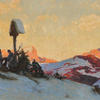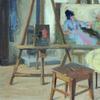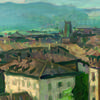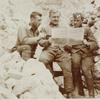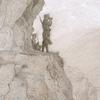The other war
Artists and writers in Tyrol in the First World War
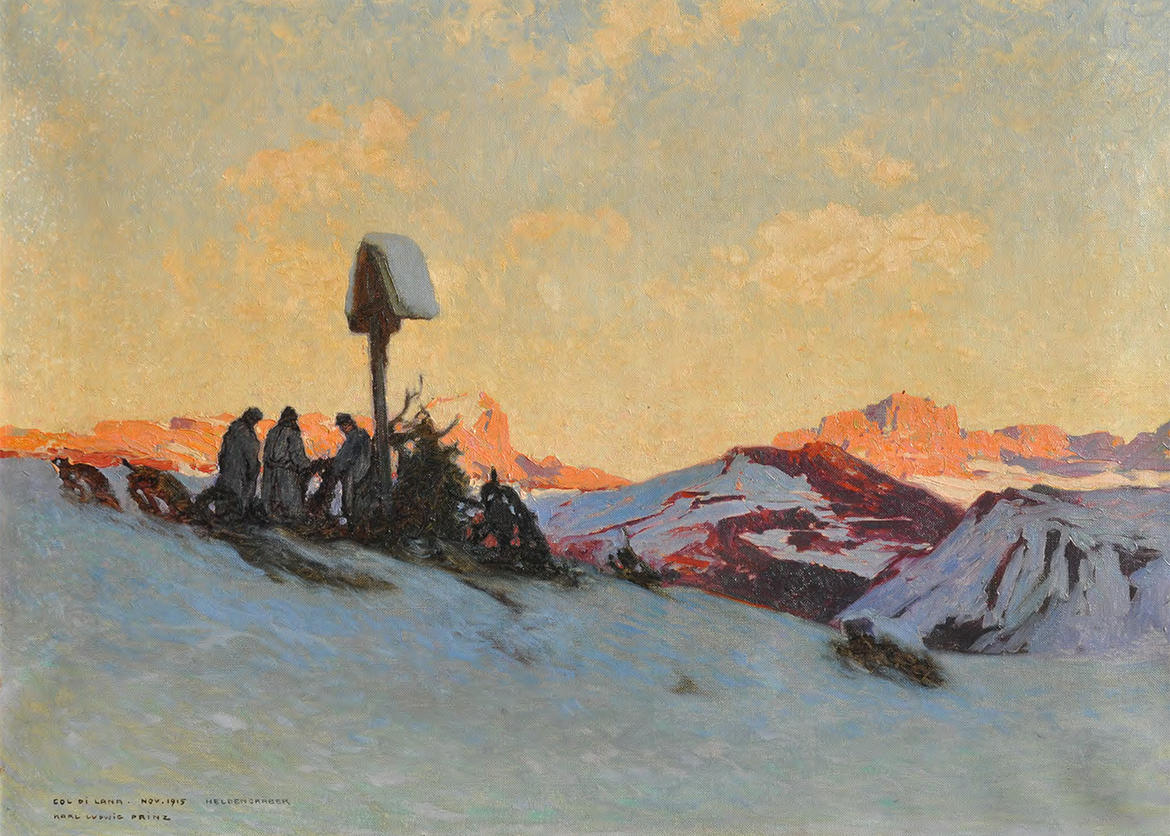
On Sunday, July 23, the exhibition The Other War - Artists and Writers in Tyrol in the First World War opened in Castel Ivano. The exhibition was presented in Trento as part of the Cultura Informa communication platform by Massimo Libardi, who curated it together with Fernando Orlandi and Carl Kraus.
Certain events are revisited in the exhibition (which will later move to Bolzano’s Museo Civico): that of a newspaper, the Soldaten-Zeitung, edited by the great Austrian writer Robert Musil; the work of a free-handed artist, Francesco Ferdinando Rizzi, who was an illustrator of the Soldaten-Zeitung; and the exhibitions of Kriegsmaler, the Austro-Hungarian war painters working for the War Press Office.
Among the 283 recruited artists, there were some very famous names: Oskar Kokoschka, Anton Kolig, Oskar Laske and Karl Ludwig Prinz. Other artists will also features in these activities and exhibitions: among them painters such as Albin Egger-Lienz, father of Tyrolean modernism, Julius von Kaan-Albest, Thomas Riß, and still renowned personalities such as Arthur Nicodem, Egon Schiele and Hans Josef Weber-Tyrol. The Quartiere della stampa di guerra (War Press Office) and the Kriegsarchiv (National Archives of Austria), recruited the best of Austrian literature: Franz Blei, Franz Theodor Csokor, Paris Gütersloh, Hugo von Hofmannsthal, Egon Erwin Kisch, Robert Musil, Leo Perutz, Rainer Maria Rilke, Franz Werfel and Stefan Zweig.
Of course, the intention of the Quartiere della stampa di guerra was not to promote contemporary artists and art. Liselotte Popelka noted that "the artistic representation of the events and living conditions of the soldiers" was meant to "strengthen the population’s acceptance of the sacrifices and privations that were required and the necessities of that great war, which affected the whole state." For this reason, the Quartiere della stampa di guerra held great exhibitions during the conflict, mostly in Austria-Hungary with some in the Allied Germany (Berlin, Dresden, Düsseldorf, Leipzig, Munich, Stuttgart ). Others were also held in non-belligerent countries: in Basel, Bern and Zurich, in Switzerland; and in Amsterdam and Kristiania, Norway.
The first exhibition was held at the Künstlerhaus in Vienna. It was inaugurated on October 2, 1915, as a forerunner of a long series of exhibitions that were not only held in the big cities of the Dual Monarchy (Vienna, Budapest and Prague) but also smaller cities such as Bolzano, Trieste, Graz and Innsbruck. In Bolzano, in early 1917, two exhibitions were held: first, one organised by the Quartier della stampa di guerra and, immediately after that, one for the Kaiserjäger artists, which was visited by Emperor Charles I and his wife Zita on 22 April.
These two exhibitions are at the centre of the review at Castel Ivano. There were the artists of the Kriegsmaler Corps, but also many other painters who were recruited at the outbreak of war. They were soldiers who continued to paint, encouraged by their superiors. They were often referred to as Regimentsmaler (regiment painters).
Francesco Ferdinando Rizzi was one of the latter. He was an illustrator for the Tiroler Soldaten-Zeitung and participated in war art exhibitions but to his great regret he was not recognised as an official Kriegsmaler, never receiving the desired appointment from the Supreme Army Command. The Kriegsmaler carried a yellow-black band around their arm with the word Kunst (art) and had special recognition documents. Above all, they could move freely in all their journeys. As proof of their work, they had to consign a certain number of works to the Artistic Group: a drawing for each week spent at the front, a picture per month when at rest. Most of the works they produced remained freely available. At the Quartiere della stampa di guerra, there were no prejudices: even women became Kriegsmaler, indeed Kriegskünstlerinnen (Women War Artists). They were recruited, and enjoyed the same rights as men, including the painters Johanna Kasimir-Hoernes, Stephanie Hollenstein and Fritzi Ulreich. During the First World War there were artists on all fronts. In Great Britain, the volunteer body of the Artists Rifles included painters, but these were artist-soldiers.
In Italy a short-lived venture was attempted by the Futurists in 1915 when Umberto Boccioni, Anselmo Bucci, Achille Funi, Antonio Sant'Elia, Ugo Piatti, Carlo Erba, Mario Sironi, Filippo Tommaso Marinetti and Luigi Russolo volunteered in the Lombard Battalion of Volunteer Cyclists and Motorists.
The United States, France, Canada and Germany had official war artists who were charged with accompanying the troops to the front and painting them. Art exhibitions were organised everywhere. But the exhibition of the Austro-Hungarian Kriegsmaler remains a unique story which has never been fully documented and reconstructed. The exhibition The Other War: Artists and Writers in Tyrol in the First World War contributes to the reconstruction of this extraordinary affair.
The exhibition includes works by: John Quincy Adams, Ferdinand Andri, Hugo von Bouvard, Josef Durst, Albin Egger-Lienz, Karl Fahringer, Paul Grabwinkler, Julius von Kaan-Albest, Luigi Kasimir, Hans Kramer, Attilio Lasta, Maximilian Lenz, Karl Ludwig Prinz, Luigi Ratini, Thomas Riss, Francesco Ferdinando Rizzi, Karl Sterrer, Albert Stolz, Ignaz Stolz, Rudolf Stolz, Ludwig Karl Strauch, Karl Truppe, Hans Josef Weber-Tyrol, Hans Beat Wieland and Augusto Zampiero.
Source: www.trentinograndeguerra.it
Free admission
